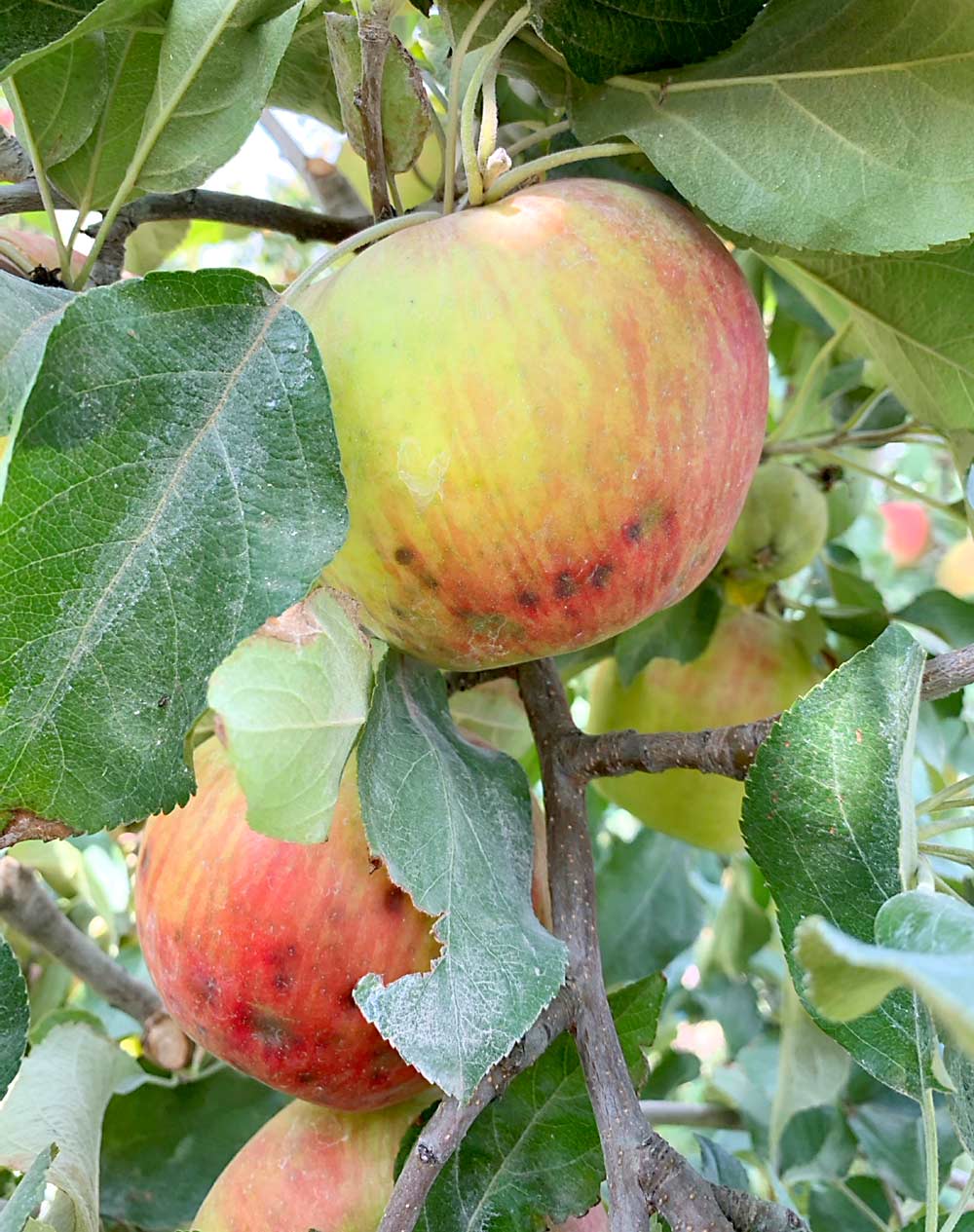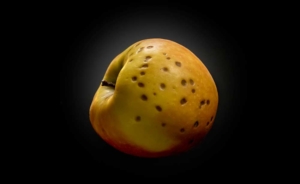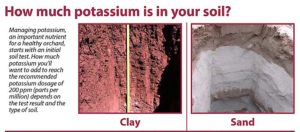
Washington State University extension specialist Bernardita Sallato suspects some growers may waste money on calcium foliar sprays and soil amendments aimed at boosting calcium to reduce bitter pit in Honeycrisp.
After a year of sampling two Honeycrisp sites, she found little difference in bitter pit incidence in apples treated with various products — cheap and expensive — and sometimes not much difference between the treatments and the untreated control.
“From this one-year trial, it appears that prophylactic applications of calcium are ineffective for reducing (bitter pit),” she wrote in her final report to the Washington Tree Fruit Research Commission, which funded her $13,000 single-year project.
Calcium doesn’t move through a plant efficiently, especially as the season progresses. Development of bitter pit, a disorder caused by calcium deficiencies in the fruit, can be associated with many growing factors, including tree age, rootstock, vigor and crop load. Washington soils typically have plenty of calcium, and bitter pit has more to do with uptake problems that should have been addressed earlier in the year, Sallato said.
She measured bitter pit incidence at harvest and in storage after treating apples with three foliar sprays and three soil applications.
Among the treatments, there were no significant differences. Only two of the foliar sprays, calcium carbonate and calcium nitrate, had success in reducing bitter pit after storage at Sites 1 and 2, but not to a level that was statistically different from the control. At Site 2, soil-applied calcium sulfate, or gypsum, improved fruit firmness but did not boost calcium levels in tissue samples or impact bitter pit incidence.
The treatments had no measurable effect on calcium in the tree, leaves, fruit flesh or peels. None of those measurements correlated with bitter pit incidence, anyway, suggesting calcium levels alone are poor predictors.
Also, interestingly, none of Sallato’s test treatments of 12 pounds of actual calcium per acre changed bitter pit incidence from the grower-managed areas of the orchard, where they used 200 or 400 pounds per acre. Thus, she thinks that in both of these sites, the soil had plenty of calcium and the added products did little to prevent bitter pit. The results, though from only one year, line up with what she has studied about calcium uptake her entire career and with previous literature, Sallato said.
Growers would do better to try to address the problem in the roots, soil or overall management of vigor and crop load, Sallato said. There must be a reason why trees aren’t getting enough calcium in a growing region with a lot of calcium already in the ground.
She’s not ready to abandon the supplements completely, though. Sometimes, calcium applications may be the only option if the problems causing disorders are not fixable or management of the problem would require several years — for example: soils that remain cold during spring or have excessive levels of potassium.
Even growers admit they sometimes use calcium amendments as insurance, she said, figuring the cost of applying it is cheaper than the risk of a low packout. •
—by Ross Courtney








Just speaking from 10 years of experience in doing calcium trials. If bitter pit problem is really bad (40%+ cull), it’s a compound problem that’s not possible to correct with just foliar calcium alone. But if the problem is marginal, foliar calcium can add bins more packable fruit on every acres. With some understanding of critical ratios of nutrients in fruit, it’s easy to see where the fine line is and how small move of calcium concentration can help.